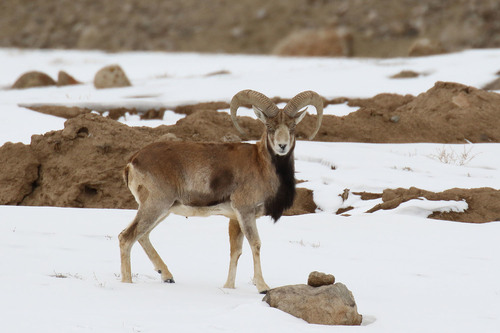
Urial
The urial, Ovis vignei, thrives in Asian grasslands and deserts. Noteworthy for its majestic spiraled horns and seasonal coat, this social grazer helps sustain plant diversity. Its adaptability to harsh environments highlights its ecological significance.
8-12 years
Lifespan
90.0 kg
Weight
Height: 80 - 91 cm
Size
Brown, Red
Color
1.5 years
Age of Sexual Maturity
Low
Aggression
Vulnerable
Conservation Status
Decreasing
Population Trend
Characteristics
Ovis vignei, commonly known as the urial, is a wild sheep native to Central and South Asia. It inhabits grassy slopes and semi-desert regions. Distinguished by its impressive, spiraled horns, the urial exhibits a reddish-brown coat that changes with the seasons. They are social animals, often found in herds, and play a crucial role in their ecosystem by grazing and maintaining plant diversity.
Distribution Range of the Urial
Ovis vignei, commonly known as the Urial, is native to the mountainous regions of Central Asia. Its geographical distribution includes countries such as Afghanistan, Pakistan, northern India, southwestern Tajikistan, and parts of Iran. The species is also found in specific regions like the Hindu Kush and the western Himalayas.
Urial's Habitat
Environmental Conditions
The Urial typically inhabits open, dry mountain slopes, and foothills. It is adapted to environments ranging from semi-desert to grassland steppe conditions, often found at altitudes between 600 to 3,600 meters. The climate in these regions is generally arid to semi-arid, with hot summers and cold winters.
Ecological Niche
Ovis vignei occupies a niche as a herbivore, primarily grazing on grasses, herbs, and shrubs. Its adaptations to steep and rugged terrain help it escape predators and access scarce water sources in its arid habitat. Subspecies of Urial may exhibit slight variations in habitat preferences due to local environmental conditions.
Copyright @ Nature Style Limited. All Rights Reserved.
 English
English